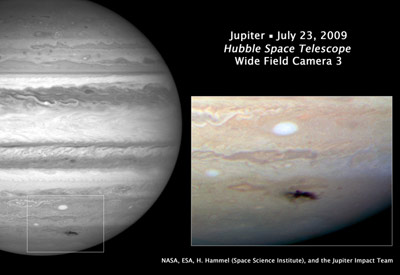
2009 – Observations of the July 19, 2009 Jupiter impact
of a comet or asteroid were made with Hubble’s new camera, the Wide Field Camera 3 (WFC3).
Read the Full Story.
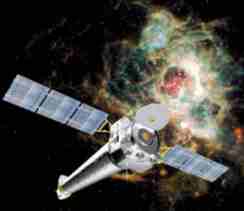
1999 – STS-93 launched at 11:31 pm CDT. The main mission was the deployment of the Chandra X-ray Observatory, which will enable scientists to more thoroughly study high energy sources in the universe, such as Supernovae & Supernova Remnants; Neutron Stars; Black Holes; Normal Galaxies; Quasars; Galaxy Clusters; and GRBs. Program Manager: NASA’s Marshall Space Flight Center. Prime Contractor: TRW. Key subcontractors include Ball Aerospace & Technologies, Inc., Eastman Kodak Company, and Raytheon Optical Systems, Inc. The scientific instruments were built by teams from MIT, Pennsylvania State University, the Smithsonian Astrophysical Observatory, the Laboratory for Space Research in the Netherlands, and the Max Planck Institute in Germany. The Smithsonian’s Chandra X-ray Center controls science and flight operations from Cambridge, MA.
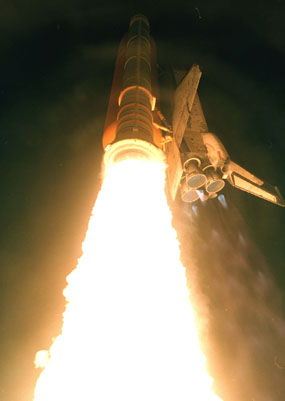
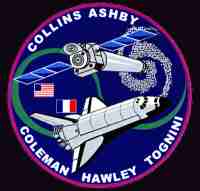

 Also on this day in 1999, Eileen M. Collins becomes the first woman ever to command a shuttle mission.
Also on this day in 1999, Eileen M. Collins becomes the first woman ever to command a shuttle mission.
The launch was scrubbed twice, first for a faulty data reading regarding hydrogen in the aft engine compartment and the second time due to lightening storms in area. The mission experienced a fuel leak, electrical problems, and computer issues during ascent but these were adjusted by ground control.
1995 – The discovery of Comet Hale-Bopp independantly by Alan Hale and Thomas Bopp
Birthdays
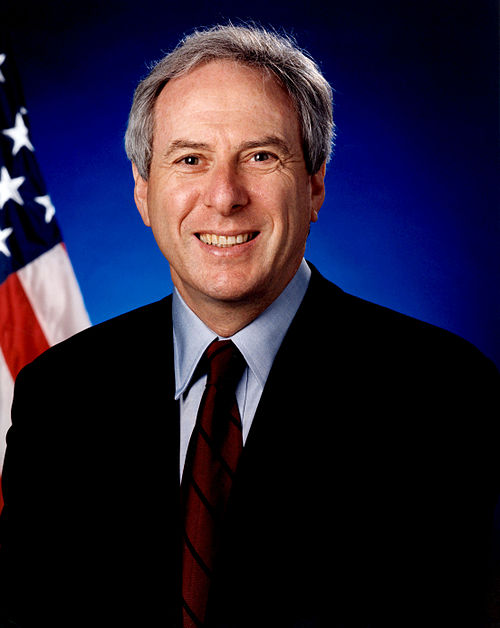
1940 – Daniel Saul Goldin was born in New York City, Goldin earned a Bachelor of Science degree in mechanical engineering from the City College of New York. He was NASA Administrator from 1992 to 2001, and was known for his support for a “Faster, better, cheaper” philosophy.
 1928 – Vera Cooper Rubin, 2003 Bruce Medalist, was born in Pennsylvania. Since 1965 she has been at the Department of Terrestrial Magnetism of the Carnegie Institution of Washington. There she joined with W. Kent Ford, Jr., inventor of an image tube spectrograph, to measure rotation curves of spiral galaxies (and
1928 – Vera Cooper Rubin, 2003 Bruce Medalist, was born in Pennsylvania. Since 1965 she has been at the Department of Terrestrial Magnetism of the Carnegie Institution of Washington. There she joined with W. Kent Ford, Jr., inventor of an image tube spectrograph, to measure rotation curves of spiral galaxies (and
later, ellipticals as well). This work, which she has extended considerably as CCDs have replaced image tubes, led to the surprising discovery that most of the mass in galaxies is dark and that it resides in the outer parts, or haloes.